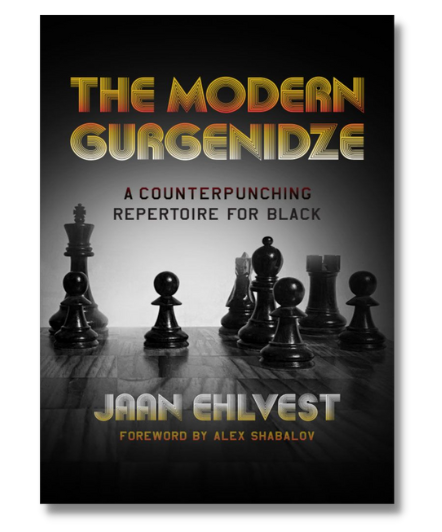I must express that there are no bad openings. There are unfortunately a lot of patzers who think that they made the wrong opening choices but the fact is that we do not write opening books for World Champions. Our clients are chess aficionados who are looking for an opening system which they can fall in love with. There might be the final truth behind every move or opening line, we may discover it with the latest engine, but this does not help us during our tournament game.
The Gurgenidze System is not the easiest to play, but there is good news – the Gurgenidze lines are very, very difficult to refute even with the engine.
Yes, it is a risky choice but everybody needs to take some risks from time to time. Why not take your time and study this book? After that one may discover that the risk is well calculated.
The development of the bishop to g7 looked too sophisticated to my eye in my early days around chess. Only some masculine older guys are used to this kind of development. Whether it is age-dependent or not, it definitely has some darker aura itself – some open aggression from the very beginning.
Every opening like general evolution has its own ontogenesis and phylogenesis. We will probably never know who invented the fianchetto and it is not so important, but who were the first conquistadores? There was a player named Boriss Kantsler who played it more than 30 years ago. Kantsler did not become a big name in chess, but he was a player who was not afraid to play the system. He was from the Soviet Union Asian region and somehow other players who used the Gurgenidze line were from Moldova and the Chebanenko chess school.
Game 1
Game 2
I myself used the system successfully when I won the European junior championship in 1982 in Groningen.
Game 3
Later in 1986, I played against the system as White against a player from Moldova.
The shaky game ended in a draw.
I was not happy with the result, but the opening line seemed to be no good for Black and I did not use it myself for the next decade or so. The main reason was that I skyrocketed to the elite chess and there was not any more incentive to take big risks while playing with black pieces. I tried it a few times, but I was not successful, losing against John Nunn in one of our World Cup tournament encounters. The main problem with this system back then was that mastering it required you to work a lot. As I already mentioned, there were other priorities and one of them was to equalize with black pieces. Our system is definitely not aimed at that.
In recent years however clever chess researchers can create opening lines that were not playable before, by using a computer engine in a clever way. Understanding the computer evaluation when it looks like the position is really very bad and deter the situations where the big advantage is going to fade sooner or later. It is more understandable when one tries to analyze rook endgames with a computer and it takes an eternity to teach the computer engine that it is a draw and to not show a big advantage. The same characteristics you may find in the middle games as well.
When I started to work as a coach with now Woman Grandmaster Mai Narva, we did not have a repertoire with black pieces. I taught her the Gurgenidze system with success. Too aggressive or masculine, not at all, it suits everybody if you are eager to find your inner fighter and want to win. I hope that the book helps players to learn some type of positions and again please do not blame me if you do not succeed.
After losing two games against Kasparov during the Tallinn – Baku friendly match, one of my chess friends and colleagues quoted the saying that “one learns from his losses, not from his wins.” I hope that everybody wins by reading and playing the lines from my book.
Jaan Ehlvest
- Rock Solid Chess: Volume 2 - February 21, 2024
- Unsung Heroes of Chess - February 19, 2024
- Build Up Your Chess: The Fundamentals - February 7, 2024

